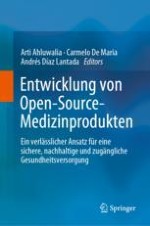2023 | OriginalPaper | Chapter
2. Auf dem Weg zu einer harmonisierten Methodik für die Entwicklung von sicheren und regelkonformen Open-Source-Medizinprodukten
Authors : Carmelo De Maria, Andrés Díaz Lantada, Licia Di Pietro, Alice Ravizza, Arti Ahluwalia
Published in: Entwicklung von Open-Source-Medizinprodukten
Publisher: Springer International Publishing
Activate our intelligent search to find suitable subject content or patents.
Select sections of text to find matching patents with Artificial Intelligence. powered by
Select sections of text to find additional relevant content using AI-assisted search. powered by
